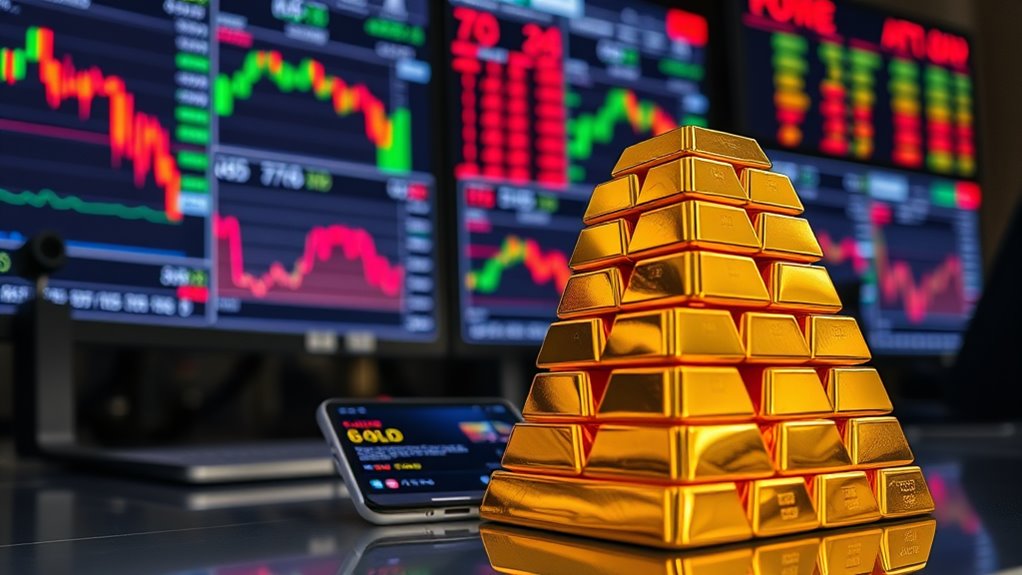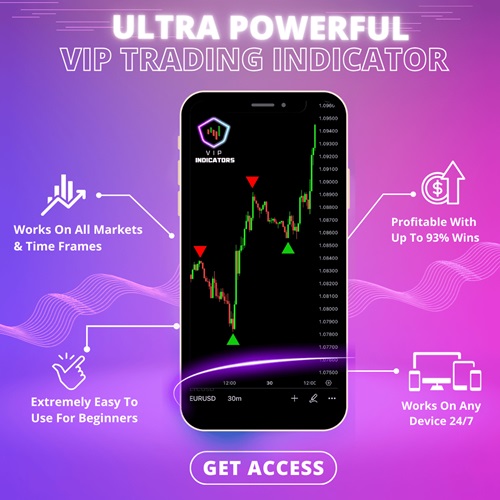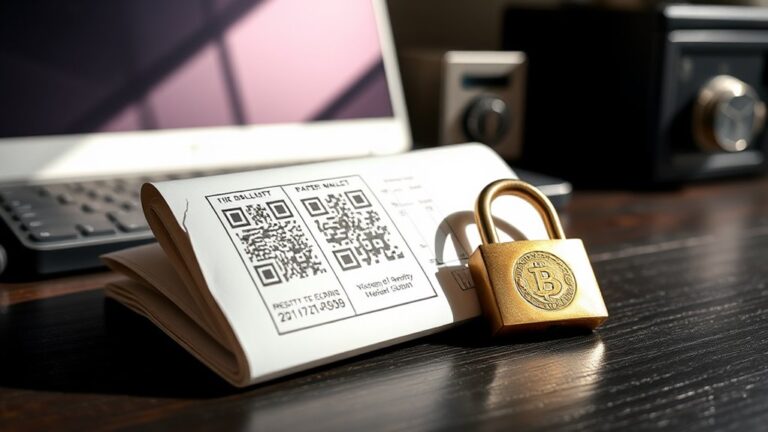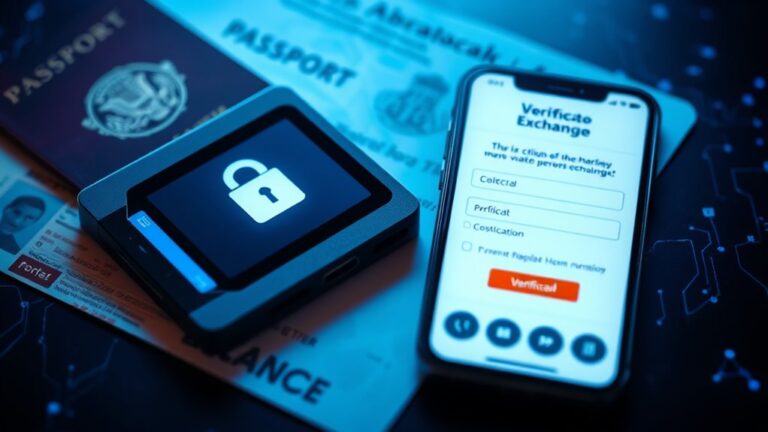Understanding Gold Futures
Note: This post may contain affiliate links, and we may earn a commission (with No additional cost for you) if you purchase via our link. See our disclosure for more info. The gold and crypto world is constantly changing. This is not financial, investment, legal, or professional advice. So, please verify the information on the gold and cryptocurrency provider’s websites.
Gold futures are basically agreements that let traders buy or sell gold at a set price on a future date. They're not about owning gold, but making money by guessing market moves. Think of it like gambling—high stakes and a lot of chaos. You can hedge against risks or just bet on price changes. But beware! It's a rough market, full of ups and downs. Stick around to uncover what really drives the madness.
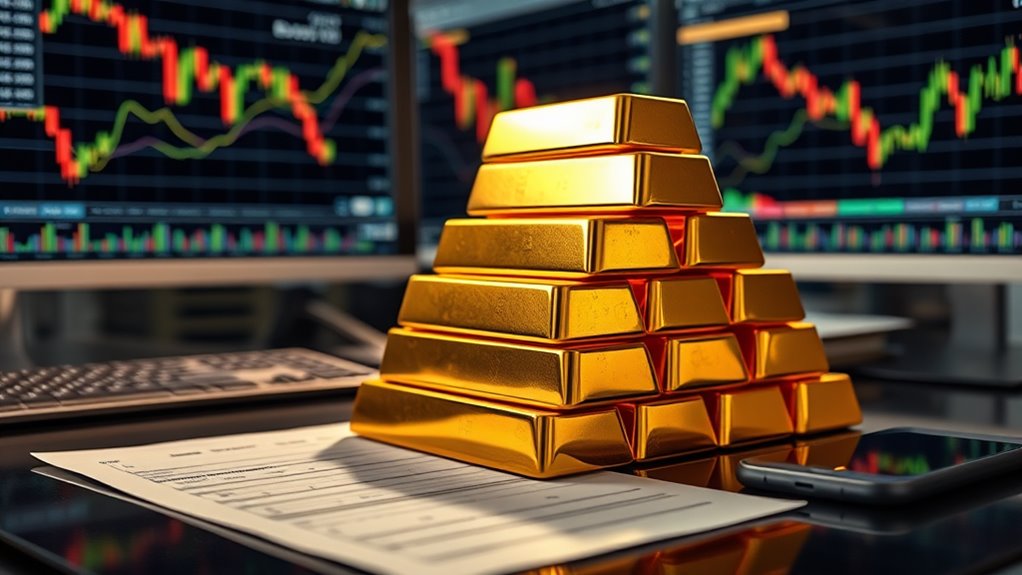
Gold futures. They're those fancy contracts that let you buy or sell gold at a set price on a specific date. Think of them as a way to play the gold game without actually hauling around bars of the shiny stuff. Each contract typically covers 100 troy ounces, and yes, they come with a lot of jargon about settlement dates and delivery terms.
Gold futures are your ticket to trading gold without the heavy lifting—100 troy ounces of potential profit or loss awaits!
But let's be real; most traders don't even want the gold. They just want to make a quick buck.
The trading scene is a bit like a high-stakes poker game. Major exchanges like COMEX and ICE handle the action, but you can't just waltz in. You need a broker, and they expect you to have some serious cash. Margin accounts? Absolutely. You'll need to cough up 2% to 20% of the contract value, depending on how wild the market is.
If the price goes against you? Get ready for a margin call. It's like getting a text from your landlord when you forgot to pay rent. Not fun.
Hedging and speculation are the names of the game. Miners lock in their prices, while jewelers secure theirs. Speculators? They're betting on price moves like it's a game of roulette. Institutions engage for portfolio diversification, trying to manage risk. For those seeking alternatives, digital gold assets offer similar exposure without the complexities of futures contracts. Gold suppliers buy short to lock in selling prices, while consumers buy long to secure purchase prices. Margin acts as a downpayment lodged with an independent central clearer, which guarantees trades against default and manages margin requirements.
But let's not kid ourselves; the market has its quirks. Inflation, interest rates, and geopolitical drama all send prices on a rollercoaster ride.
And those margin requirements? Oof. They can be a double-edged sword. High leverage means you can amplify your gains, but also your losses. It's a wild world out there, and it's not just the pros who know how to play it.
Retail investors can get swallowed up in the chaos, often left in the dust. So, while gold futures might sound shiny and enticing, tread carefully. The gold rush isn't what it used to be.
Frequently Asked Questions
What Are the Tax Implications of Trading Gold Futures?
Trading gold futures? Get ready for some tax fun!
Gains are split: 60% long-term, 40% short-term. So, while you might think you're cashing in big time, Uncle Sam wants his share—about 23% effective tax rate. Not bad compared to the 28% on physical gold.
But watch out for those annual unrealized gains. They'll show up on your tax bill, whether you like it or not. It's a wild ride!
How Do Leverage and Margin Work in Gold Futures?
Leverage and margin in gold futures? It's a wild ride.
With a small deposit, traders control massive contracts. Think $4,000 for $120,000 worth of gold. Sounds great, right?
But hold on—small price shifts can mean huge wins or devastating losses.
Margin calls? They're the nightmare that haunts traders. Miss one, and your position's toast.
It's all about being smart with money, or you might just end up broke, staring at your screen in disbelief.
Can I Trade Gold Futures Outside of Regular Market Hours?
Yes, you can trade gold futures outside regular market hours. Exciting, right?
However, don't get too giddy. The liquidity drops, making it harder to execute trades without hiccups.
And guess what? Volatility spikes when markets overlap. So, if geopolitical drama hits, brace yourself for wild price swings.
It's a gamble, especially when thin markets widen the bid-ask spreads.
What Factors Influence Gold Futures Prices the Most?
Gold futures prices are influenced by a cocktail of factors.
Interest rates? They matter. Higher rates can scare off investors.
The US dollar's strength? A stronger dollar usually means less demand for gold.
Then there's economic chaos—geopolitical crises or inflation spikes? Gold shines during those times.
And don't forget supply issues; with mining challenges and central bank purchases, gold can get tight.
Is It Possible to Physically Own Gold Through Futures Contracts?
Sure, you can physically own gold through futures contracts.
But, here's the kicker: most traders don't actually go that route. They'd rather cash out than deal with the hassle of logistics and storage. Who wants to haul heavy bars around, right?
Real ownership means dealing with depositories, certifications, and transport. It's not just a click-and-collect situation.
In the end, most just play the market instead. Less mess, more profit.

